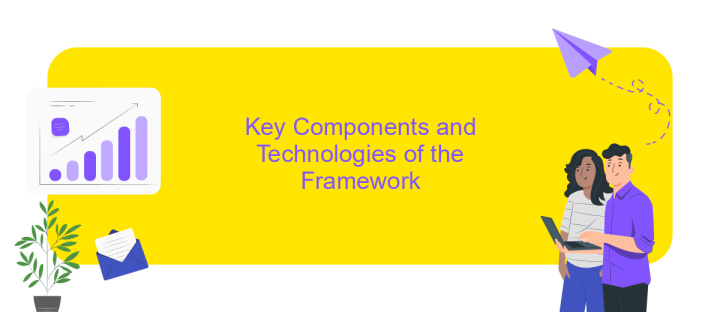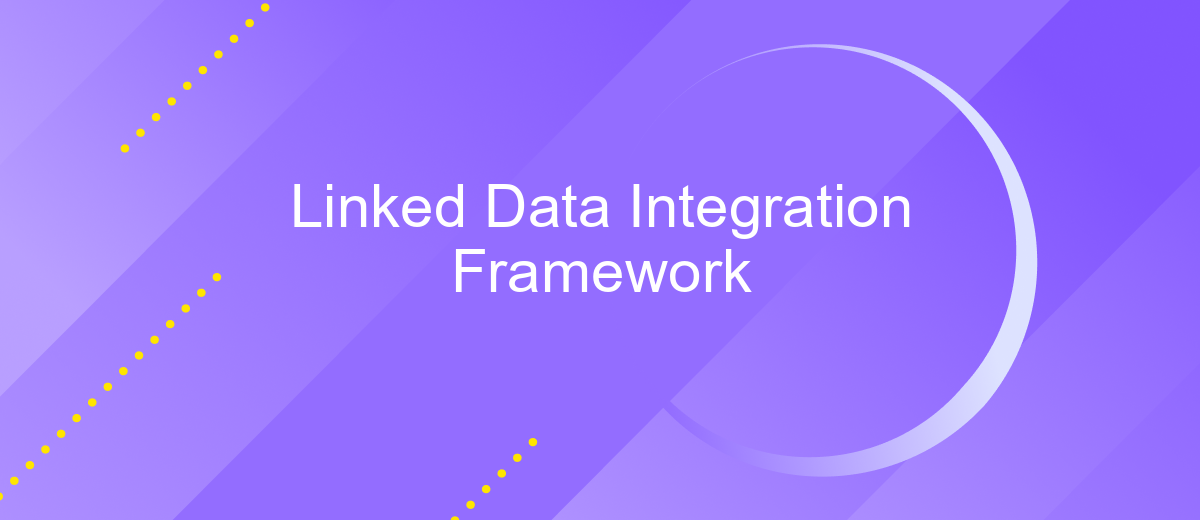Linked Data Integration Framework
The Linked Data Integration Framework is a comprehensive approach designed to seamlessly connect and harmonize diverse data sources on the web. By leveraging standardized protocols and formats, this framework facilitates the integration of disparate datasets, enhancing data accessibility and interoperability. It enables organizations to unlock the full potential of their data, fostering innovation and informed decision-making in an increasingly data-driven world.
Introduction to Linked Data and its Challenges
Linked Data represents a method of publishing structured data so that it can be interlinked and become more useful. It is based on standard web technologies such as HTTP, RDF, and URIs, enabling data from different sources to be connected and queried. This approach facilitates the creation of a global data space, which is sometimes referred to as the "Web of Data". However, implementing Linked Data comes with its own set of challenges.
- Data Quality: Ensuring accuracy, consistency, and reliability of the data.
- Scalability: Managing large volumes of data efficiently.
- Interoperability: Integrating data from diverse sources with varying formats.
- Security and Privacy: Protecting sensitive information while maintaining openness.
- Maintenance: Keeping data up-to-date and correcting errors over time.
Addressing these challenges requires robust frameworks and tools that can handle the complexity of data integration and management. Innovative solutions are being developed to enhance the usability and accessibility of Linked Data, aiming to unlock its full potential for various applications across industries. As Linked Data continues to evolve, addressing these issues remains crucial to its successful adoption and implementation.
Architecture of the Linked Data Integration Framework

The architecture of the Linked Data Integration Framework is designed to seamlessly connect disparate data sources, enabling efficient data exchange and integration. At its core, the framework employs a modular approach, allowing for flexible and scalable integration processes. It leverages semantic web technologies to ensure data interoperability, utilizing RDF (Resource Description Framework) and SPARQL (SPARQL Protocol and RDF Query Language) to manage and query linked data. This architecture is built to handle diverse data formats and structures, providing a robust foundation for integrating complex datasets.
Furthermore, the framework incorporates advanced tools and services to streamline the integration process. For instance, ApiX-Drive can be utilized to automate data workflows, facilitating the connection between various applications and data sources without the need for extensive coding. This service enhances the framework's capability by offering user-friendly interfaces for configuring integrations, thus reducing the technical barrier for users. Overall, the architecture not only supports dynamic data integration but also ensures that the process is efficient, reliable, and adaptable to evolving data needs.
Key Components and Technologies of the Framework

The Linked Data Integration Framework (LDIF) is a powerful tool designed to streamline the integration of diverse data sources using linked data principles. It provides a robust architecture for managing and transforming data into a unified format, facilitating interoperability and enhancing data accessibility across different platforms.
- Data Extraction: This component involves retrieving data from various sources, including databases, APIs, and web services, ensuring that the framework can handle diverse data formats.
- Data Transformation: Once extracted, data undergoes transformation processes to align with linked data standards, employing technologies like RDF (Resource Description Framework) and OWL (Web Ontology Language).
- Data Integration: This step merges the transformed data into a cohesive dataset, utilizing SPARQL queries and other semantic web technologies to ensure seamless integration.
- Data Storage and Access: The integrated data is stored in a triple store or graph database, providing efficient access and retrieval mechanisms for users and applications.
By leveraging these components and technologies, the Linked Data Integration Framework enhances data interoperability, enabling organizations to harness the full potential of their data assets. This framework supports scalable and flexible data integration, paving the way for advanced data analytics and informed decision-making.
Implementation and Case Studies

The implementation of the Linked Data Integration Framework (LDIF) leverages a modular architecture to facilitate seamless data integration across diverse linked data sources. This framework is designed to support data transformation, enrichment, and interlinking processes, ensuring high-quality data integration outcomes. The core components of LDIF include data extraction modules, transformation engines, and linkage discovery tools, all of which work in harmony to process and integrate data efficiently.
In practical scenarios, LDIF has been successfully applied across various domains, demonstrating its versatility and robustness. By enabling organizations to harness the power of linked data, the framework enhances decision-making and operational efficiency. The following case studies illustrate the practical applications and benefits of LDIF in real-world settings:
- Healthcare Integration: LDIF was utilized to integrate patient records from multiple healthcare providers, improving patient care through comprehensive data access.
- Academic Research: Researchers employed LDIF to consolidate data from various scholarly databases, facilitating collaborative research and data-driven insights.
- Smart City Development: The framework supported the integration of urban data streams, aiding city planners in making informed infrastructure decisions.
These case studies highlight LDIF's ability to transform disparate data sources into a cohesive and actionable data ecosystem. By addressing integration challenges, LDIF empowers organizations to unlock the full potential of their data assets, driving innovation and strategic growth.


Conclusion and Future Directions
In conclusion, the Linked Data Integration Framework offers a robust solution for managing and connecting diverse data sources, paving the way for more efficient and meaningful data utilization. By leveraging semantic technologies, this framework facilitates seamless data integration, enhancing interoperability and data accessibility. As organizations continue to embrace digital transformation, the demand for sophisticated data integration solutions is expected to grow, underscoring the framework's relevance and potential for future development.
Looking ahead, future directions for the Linked Data Integration Framework could involve incorporating advanced machine learning algorithms to further automate and optimize data integration processes. Additionally, integrating services like ApiX-Drive can simplify the configuration of data integrations, allowing users to connect various applications and data sources effortlessly. As the landscape of data integration evolves, continuous innovation and adaptation will be crucial to address emerging challenges and opportunities, ensuring the framework remains a vital tool for organizations seeking to harness the full potential of their data assets.
FAQ
What is Linked Data Integration Framework (LDIF)?
How does LDIF handle data transformation?
Why is linked data integration important?
What challenges can arise during linked data integration?
How can automation tools assist in linked data integration?
Strive to take your business to the next level, achieve your goals faster and more efficiently? Apix-Drive is your reliable assistant for these tasks. An online service and application connector will help you automate key business processes and get rid of the routine. You and your employees will free up time for important core tasks. Try Apix-Drive features for free to see the effectiveness of the online connector for yourself.

